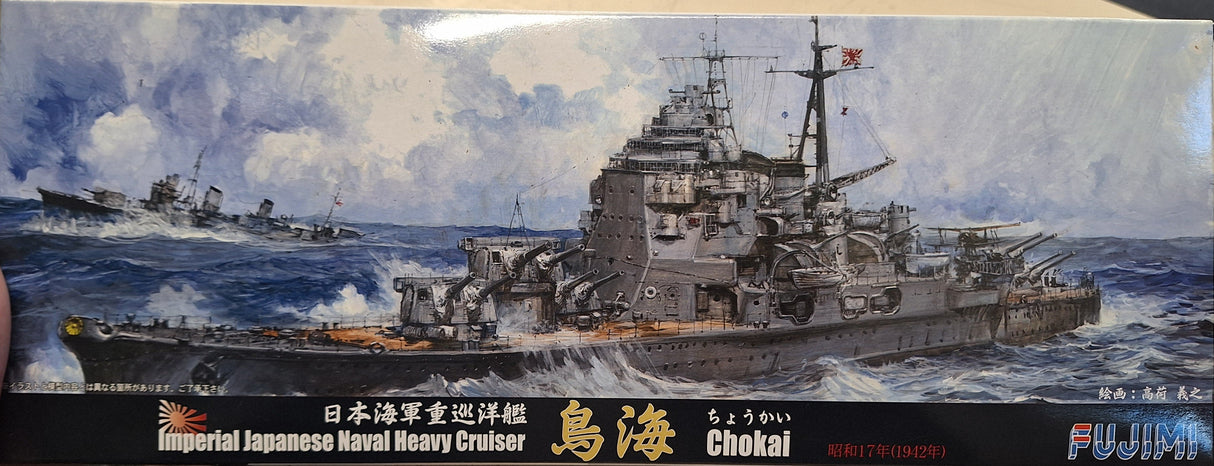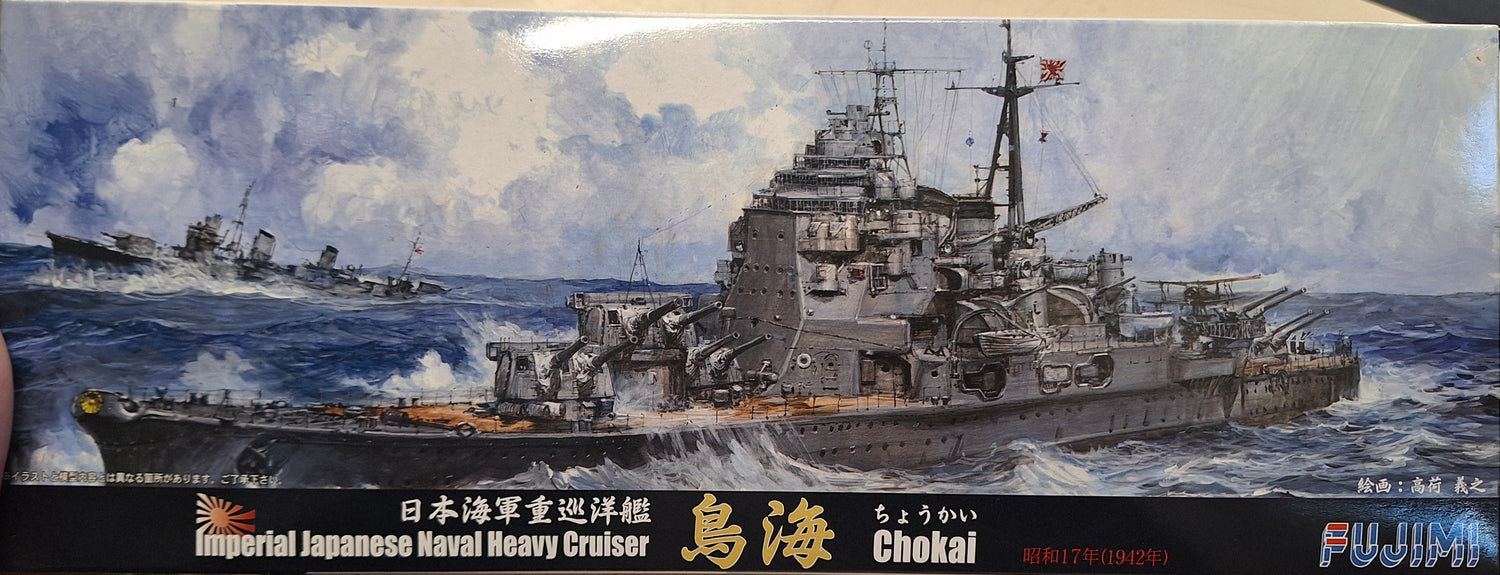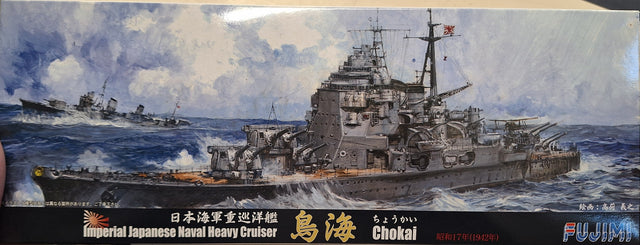Fujimi 1:700 Chokai 1942 IJN Heavy Cruiser
Fujimi 1:700 Chokai 1942 IJN Heavy Cruiser is backordered and will ship as soon as it is back in stock.
Couldn't load pickup availability
Delivery and Shipping
Delivery and Shipping
We use tracked courier for fast delivery New Zealand wide
Description
Description
Chokai was a Japanese heavy cruiser the keel of which was laid in 1928, launched in April 1931, and commissioned in the Imperial Japanese Navy in June 1932. The length of the ship at the time of launching was 203 m, width 19 m, and the actual full displacement, after modernization - 15,700 tons. The maximum speed of the cruiser Chokai was up to 35.5 knots. The main armament at the time of the launch was 10 203 mm guns in five turrets, two guns each, and the additional armament included: 4 127 mm guns and 8 610 mm torpedo tubes.
Chokai was the fourth and final Takao-class cruiser. Cruisers of this type were built respecting the limitations of the Washington Disarmament Treaty signed by the government in Tokyo in 1922. The ships of this type are clearly based on the design of the Myoko-class cruisers. The changes concerned: the use of new main artillery cannons, improved armor, expansion of the bow superstructure and better layout of the torpedo armament. Emphasis was also placed on high top speed. The pursuit of such extreme goals led to the creation of ships with powerful artillery and torpedo armament, great speed, but with a lower range than assumed, average sea bravery and with considerable stability problems. Subsequent modernizations on the first two ships of this type partially eliminated these disadvantages, but did not completely eliminate them. The combat route of the cruiser Chokai in World War II began as early as December 1941 with support for Japanese landings in Malaya. Then, until March 1942, he fought with successes in the area of the Dutch East Indies. In June 1942, he took part in the Battle of Midway, but suffered no major damage in it. Later, he took part in the struggle in the Solomon Islands, and in August 1942 he fought in the Battle of Savo Island - one of the greatest successes of the Japanese light forces in the Pacific! The next important battles in which Chokai took part were: the Battle of the Philippine Sea and the Battle of Leyte Bay in 1944. In the course of a recent struggle, Chokai was sunk on October 25, 1944.
Payment & Security
Payment methods
Your payment information is processed securely. We do not store credit card details nor have access to your credit card information.



